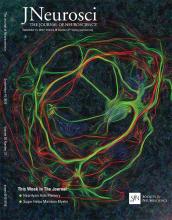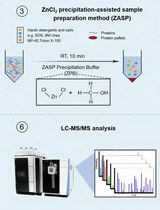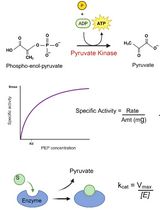- EN - English
- CN - 中文
Heavy Metal Stress Assay of Caenorhabditis elegans
秀丽隐杆线虫重金属胁迫检测
发布: 2017年06月05日第7卷第11期 DOI: 10.21769/BioProtoc.2312 浏览次数: 11580
评审: Oneil G. BhalalaTugsan TezilJian Chen
Abstract
Organisms have developed many protective systems to reduce the toxicity from heavy metals. The nematode Caenorhabditis elegans has been widely used to determine the protective mechanisms against heavy metals. Responses against heavy metals can be monitored by expression of reporter genes, while sensitivity can be determined by quantifying growth or survival rate following exposure to heavy metals.
Keywords: Caenorhabditis elegans (秀丽隐杆线虫)Background
Some heavy metals, such as arsenic, cadmium and mercury, are known to be harmful to the majority of organisms including humans (Valko et al., 2005). To reduce the toxicity by these metals, the organisms have developed various protective systems. The nematode Caenorhabditis elegans has been used to understand the mechanisms of protection against heavy metals. Previous studies have revealed that many genes, such as detoxification enzymes, transcription factors and signaling factors, are involved in the protection from heavy metals in this organism (Broeks et al., 1996; Mizuno et al., 2004; Inoue et al., 2005; Schwartz et al., 2010). Determinations of viability and growth, in addition to measurements of reporter gene expression, are usually used to monitor the effects of heavy metals in C. elegans. In this protocol, we describe the methods for assays for arsenic, copper and cadmium using C. elegans.
Materials and Reagents
- Latex glove (KCWW, Kimberly-Clark, catalog number: 57330 )
- Petri dishes 60 x 15 mm (Iwaki, catalog number: 1010-060 )
- 1.5 ml plastic tubes (Eppendorf, catalog number: 3810X )
- 1 ml pipetman tips (Thermo Fisher Scientific, Thermo Scientific, catalog number: 111-N-Q )
- 0.2 ml pipetman tips (Thermo Fisher Scientific, Thermo Scientific, catalog number: 110-N-Q )
- Slide glass (Matsunami Glass, catalog number: S2227 )
- Paper tape
- Cover glass (Matsunami Glass, 18 x 18, Thickness No.1)
- Corning 50 ml centrifuge tubes (Corning, catalog number: 4558 )
- Petri dishes 35 x 15 mm (Iwaki, catalog number: 1000-035 )
- Pasteur pipet, 5 inch (Iwaki, catalog number: IK-PAS-5P )
- Parafilm (Wako Pure Chemical Industries, catalog number: 535-02443 )
- Autoclave tape
- pH probe (As One, catalog number: 2-347-05 )
- 10 ml glass tubes (Iwaki, catalog number: 09183982 )
- 99.98% Platinum Wire, ø0.2 mm (Nilaco, catalog number: 351325 )
- OP50 E. coli bacteria (University of Minnesota, C. elegans Genetics Center, N/A)
- Worm strains (can be obtained from CGC: see Table 1 for example)
- Calcium chloride dihydrate (CaCl2·2H2O) (Wako Pure Chemical Industries, catalog number: 031-00435 )
- Potassium phosphate dibasic (K2HPO4) (Wako Pure Chemical Industries, catalog number: 164-04295 )
- Potassium phosphate monobasic (KH2PO4) (Wako Pure Chemical Industries, catalog number: 169-04245 )
- Magnesium sulfate heptahydrate (MgSO4·7H2O) (Wako Pure Chemical Industries, catalog number: 138-00415 )
- Bacto peptone (BD, BactoTM, catalog number: 211677 )
- Sodium chloride (NaCl) (Wako Pure Chemical Industries, catalog number: 191-01665 )
- Bacto agar (BD, BactoTM, catalog number: 214010 )
- Distilled water
- Cholesterol (Wako Pure Chemical Industries, catalog number: 034-03002 )
- 99.5% ethanol (Wako Pure Chemical Industries, catalog number: 057-00456 )
- LB broth (BD, Difco, catalog number: 244620 )
- Sodium phosphate dibasic (Na2HPO4) (Wako Pure Chemical Industries, catalog number: 194-02875 )
- Pentahydrate copper sulphate (CuSO4·5H2O) (Wako Pure Chemical Industries, catalog number: 034-20065 )
- Cadmium chloride, anhydrous (CdCl2) (Wako Pure Chemical Industries, catalog number: 036-00125 )
- Sodium (mate)arsenite (NaAsO2) (Sigma-Aldrich, catalog number: S7400 )
- Gelatin (Sigma-Aldrich, catalog number: G7765 )
- Agarose (Thermo Fisher Scientific, InvitrogenTM, catalog number: 16500500 )
- Tris base (Nacalai Tesque, catalog number: 35434-05 )
- Hydrochloric acid (HCl; 35-37%) (Wako Pure Chemical Industries, catalog number: 080-01066 )
- SDS (Wako Pure Chemical Industries, catalog number: 191-07145 )
- Glycerol (Wako Pure Chemical Industries, catalog number: 075-00616 )
- Bromophenol blue (Wako Pure Chemical Industries, catalog number: 021-02911 )
- 2-mercaptoethanol (Wako Pure Chemical Industries, catalog number: 135-07522 )
- Sodium azide (Wako Pure Chemical Industries, catalog number: 195-11092 )
- 1 M CaCl2 (see Recipes)
- 1 M K-phosphate buffer (pH 6) (see Recipes)
- 1 M MgSO4 (see Recipes)
- NGM solution (see Recipes)
- 6 cm NGM dish with OP50 (see Recipes)
- 0.5% cholesterol (see Recipes)
- LB broth (see Recipes)
- M9 buffer (see Recipes)
- 1 M sodium azide (see Recipes)
- 1 M CuSO4 (see Recipes)
- 1 M CdCl2 (see Recipes)
- 0.5 M sodium arsenite (see Recipes)
- 2% gelatin (see Recipes)
- 2% agarose (see Recipes)
- 2% agarose with 10 mM sodium azide (see Recipes)
- Tris-HCl (pH 6.8) (see Recipes)
- 1 M 3x SDS sample buffer (see Recipes)
Equipment
- Stereomicroscope (Olympus, model: SZ60 )
- Centrifuge (TOMY, model: MX-100 )
- Rotator (TAITEC, model: RT-50 , catalog number: 0000165-000)
- Fluorescent microscope (Nikon Instruments, model: Eclipse E800 ) with highly sensitive camera (ANDOR, model: Zyla 5.5 ) controlled by Nikon NIS-Elements software
- Pipetman (P-20, P-200, P-1000; Gilson)
- Heat block (TAITEC, model: DTU-Mini , catalog number: 0063287-000)
- Autoclave (TOMY DIGITAL BIOLOGY, model: SX-500 )
- Microwave oven (Sharp)
- Pipettor (Drummond Scientific, model: Pipet-Aid® XP , catalog number: 4-000-101)
- Shaker (TAITEC, model: Personal-11 , catalog number: 0000145-000)
- Refrigerated incubator (Panasonic Healthcare, model: MIR-154-PJ )
- Bunsen burner (Warzef)
- Dental burner (Phoenix-Dent, model: APT-3 )
Software
- ImageJ software (https://imagej.nih.gov/ij/download.html)
- GraphPad Prism QuickCalcs (https://www.graphpad.com/quickcalcs/)
Procedure
文章信息
版权信息
© 2017 The Authors; exclusive licensee Bio-protocol LLC.
如何引用
Readers should cite both the Bio-protocol article and the original research article where this protocol was used:
- Pastuhov, S. I., Shimizu, T. and Hisamoto, N. (2017). Heavy Metal Stress Assay of Caenorhabditis elegans. Bio-protocol 7(11): e2312. DOI: 10.21769/BioProtoc.2312.
- Pastuhov, S. I., Fujiki, K., Tsuge, A., Asai, K., Ishikawa, S., Hirose, K., Matsumoto, K. and Hisamoto, N. (2016). The Core Molecular Machinery Used for Engulfment of Apoptotic Cells Regulates the JNK Pathway Mediating Axon Regeneration in Caenorhabditis elegans. J Neurosci 36(37): 9710-9721.
分类
生物化学 > 其它化合物 > 元素
分子生物学 > 蛋白质 > 表达
微生物学 > 微生物生理学 > 胁迫反应
您对这篇实验方法有问题吗?
在此处发布您的问题,我们将邀请本文作者来回答。同时,我们会将您的问题发布到Bio-protocol Exchange,以便寻求社区成员的帮助。
Share
Bluesky
X
Copy link













